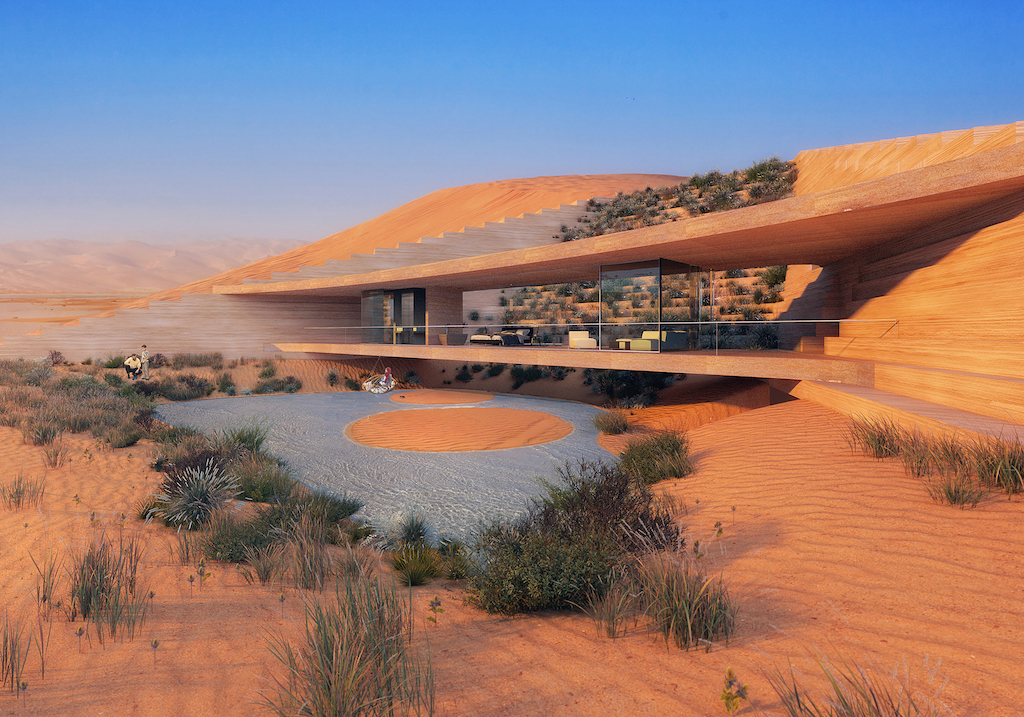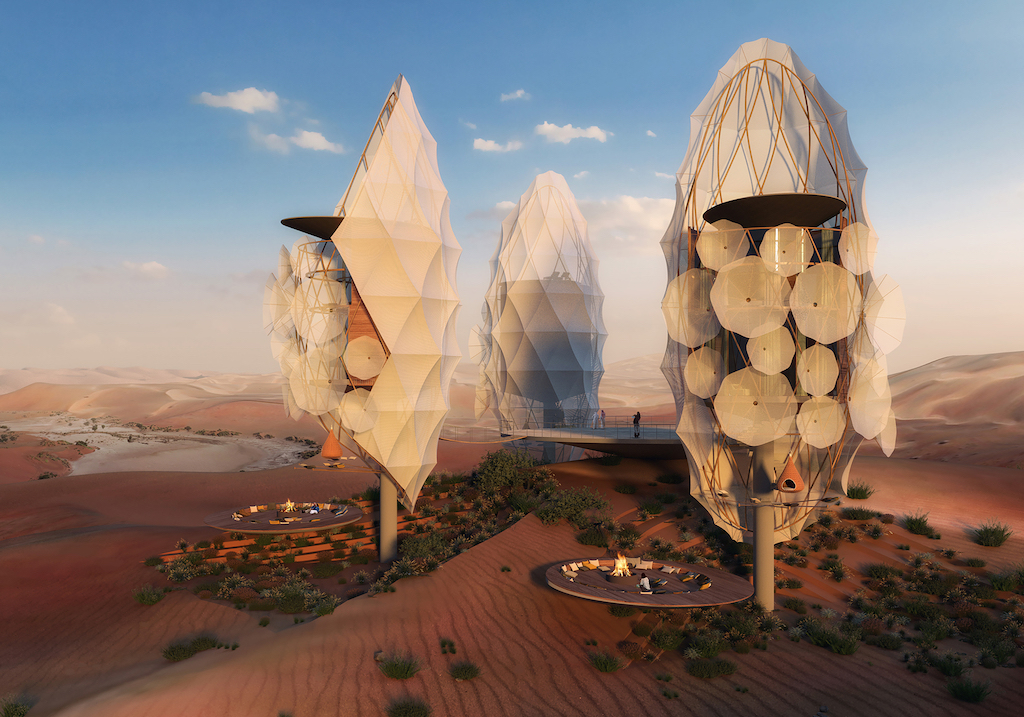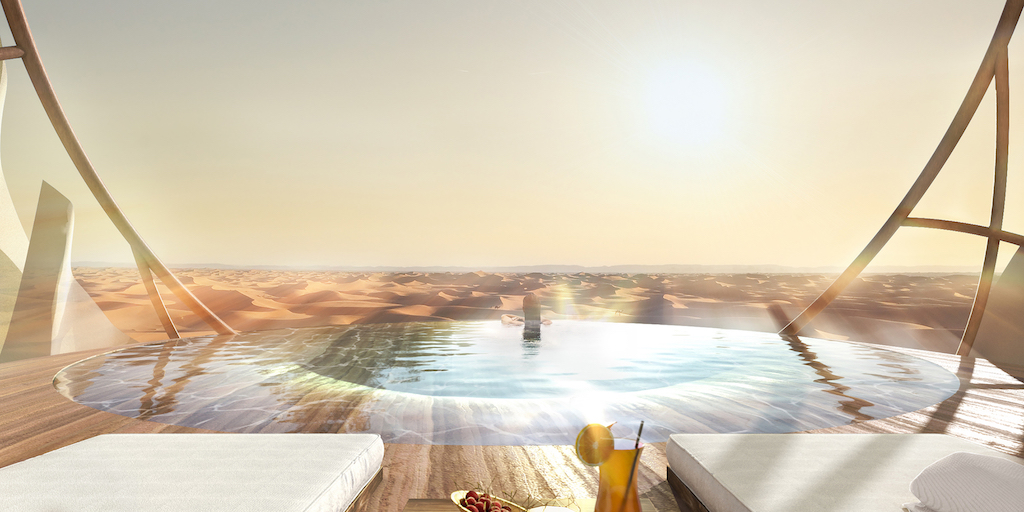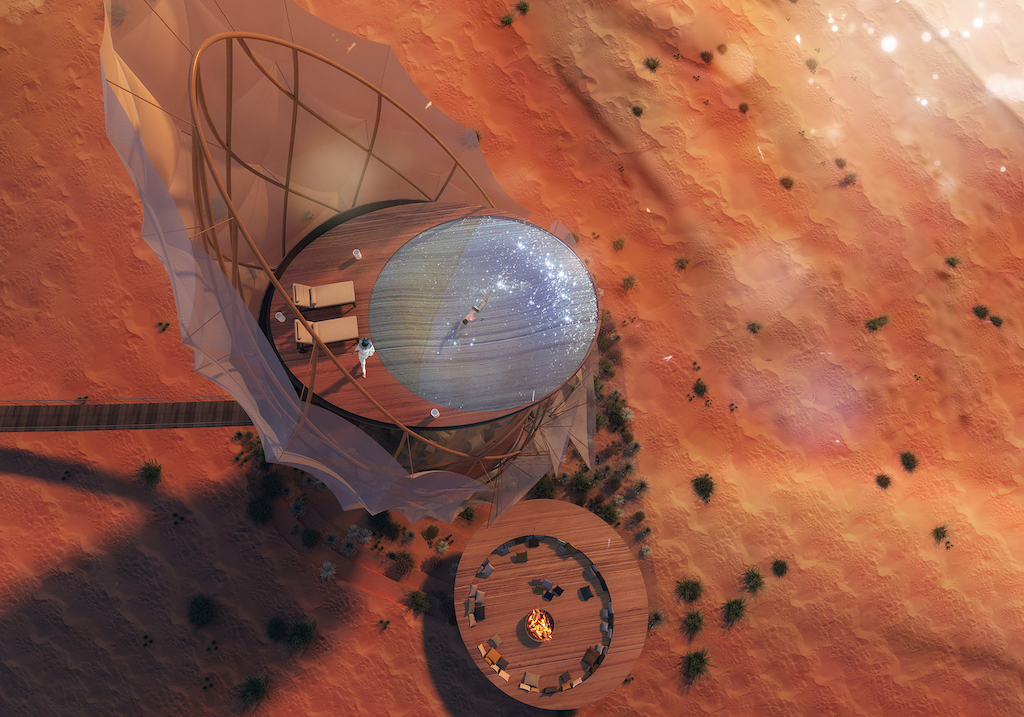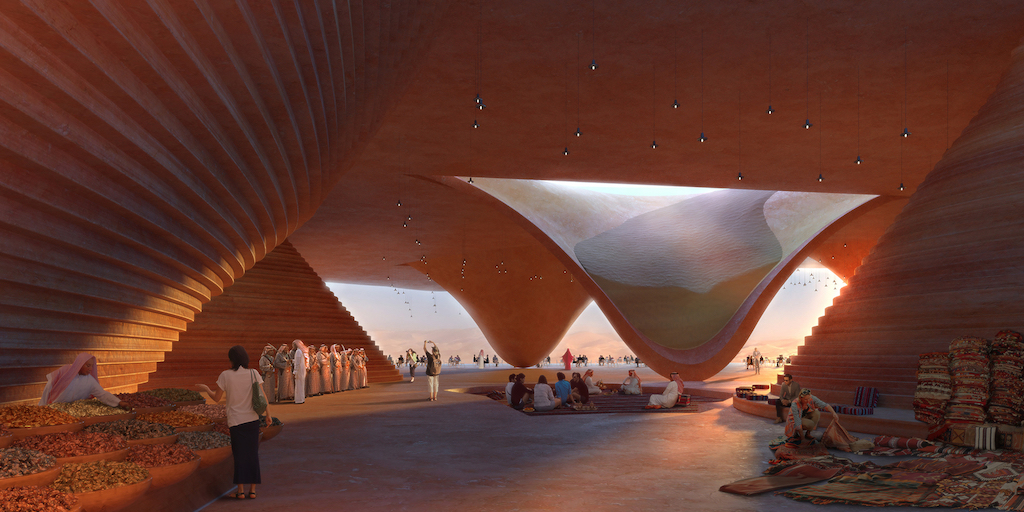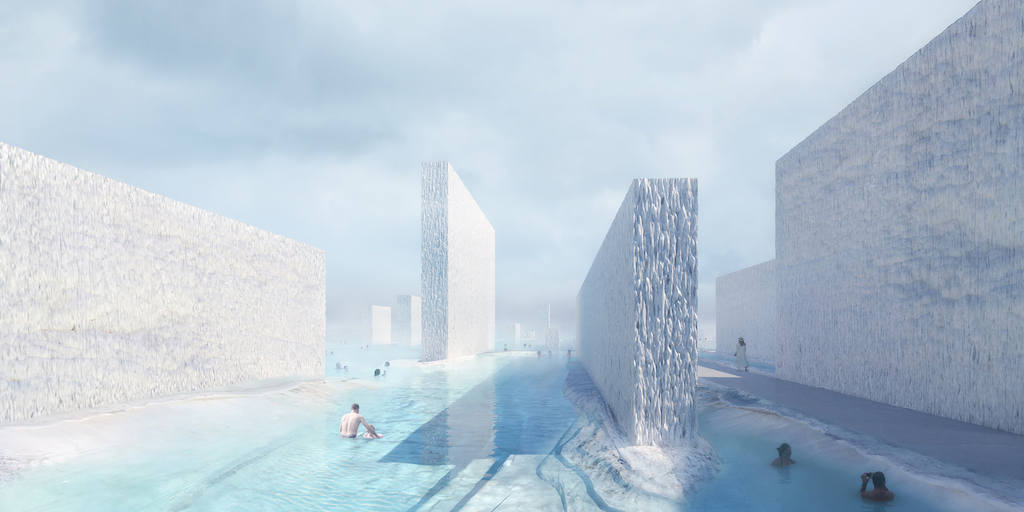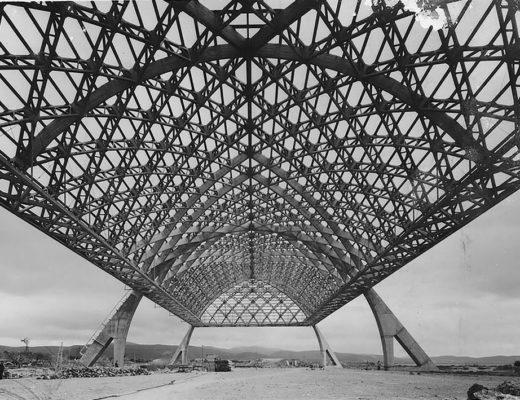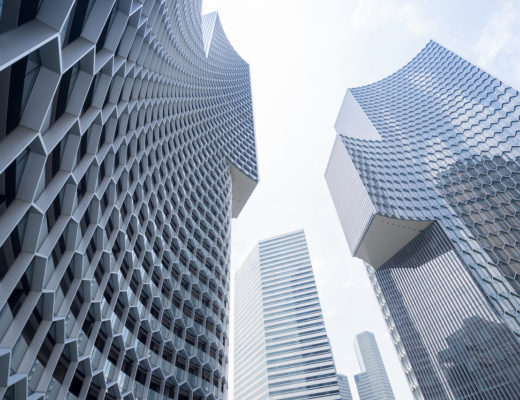Following their competition win, Dubai-based X-Architects’ are set to design a 240,000m² Desert Hideaway Resort in the Kingdom of Saudi Arabia. Located in Rub’ Al Khali, also known as the Empty Quarter – the world’s biggest sand sea – it’ll house a 60-key luxury desert resort in an ultra-harsh and empty environment. The project addresses the challenges of designing for a desert site that has 250-meter-high red sand dunes interspersed with white salt flats called “sabkhas”.
To provide visitors with a contextual experience, X-Architects, led by Ahmed Al Ali and Farid Esmaeil, has imagined “a constellation of architecture strategically-placed on the vast terrain”. This will translate into dune-shaped units that will offer spectacular views of the sabkhas. Another structure placed on the highest point of the site mimics the desert flower Cistanche Tubulosa and offer a view of the star-studded sky.
Created out of salt, a horizontal white spa “carpet” celebrates the healing quality of natural minerals found on the site. The underground structure is defined by a series of one-directional walls, and the sun is filtered through openings on the surface of the salt carpet.
The main arrival hall is inspired by natural carvings found in the landscape. According to the architect, “to create a strong relationship between architecture and landscape, the interior spaces were carved from dunes to form sand-filled columns”.
“We go to the desert to become one with nature, experience solitude and ponder about creation. We start to notice the magical spectrum of light throughout the day. At night, the desert transforms magically: the air is cooler, stars emerge like the Arabian Nights tale, and darkness has infinite shades! Exquisite indigenous plants are shaped beautifully and protect themselves from the extreme environment. The wind becomes like a land artist, moving similar-sized sand particles and minerals to reveal the richness of its intense colour.” – X-Architects.
The flower villa, inspired by the desert rose, manifests as an elongated and enclosed structure. “A polymer fiber mesh encloses the structure partially to minimise exposure to sandstorms, collects water for the indigenous garden, and supports the structure,” explain the architects. On another hand, the dune units have been designed such that they minimise the impact of the intervention on the land. “A vertical garden was incorporated to create an ecosystem that is served by the reuse of water and vegetation, and enhanced by the stepped back wall that seamlessly sinks into the existing sand dunes”. The engineering firm
Saudi Arabia continues with its ambitious plans to transform the hitherto conservative oil-rich kingdom into a vibrant tourism hub in the Middle East. Some of the high profile names who are helming large-scale projects in the country are Foster + Partners and Danish firm BIG.
You might also like:
Al-Ula Desert visitor centre by KWY Studio ushers new tourism era in Saudi Arabia
Ground preparation work begins on Saudi’s Qiddiya project to be designed by BIG
Al-Ula Desert visitor centre by KWY Studio ushers new tourism era in Saudi Arabia

